Environment
425 articles

For any gardening enthusiast, the word "bulb" is practically a household term. These fascinating underground structures play a vital role in countless plants, gracing our gardens with vibrant blooms and enriching our kitchens with delicious vegetables. From the lily to the onion, bulbs come in a surprising...

A protozoan is a single-celled organism than belongs to the kingdom Protista, although this is a somewhat archaic terminology. This is because protozoa are no longer considered animals, but are types of eukaryotic organisms. Despite this, they have behaviors which make it understandable why they were once...

Indicator species act like silent alarms, their presence or absence alerting scientists to potential air, water, and soil pollution. Their presence, absence, or abundance can reveal the environmental conditions of a particular habitat. They are essentially like a canary in a coal mine for the environment.
This...

The ocean depths hold some of the most enigmatic and unexplored landscapes on Earth. Among these mysteries lie the abyssal plains, vast underwater stretches cloaked in eternal darkness and immense pressure. These regions, far from the reach of sunlight, have long remained a source of fascination and intrigue...
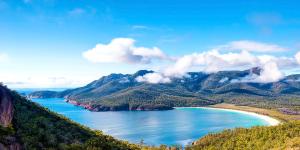
A bay in geography is a natural coastal inlet of a large body of water such as a sea, ocean or lake that has a considerable area, but is generally smaller than that of a gulf. Such a coastal relief can be the result of various geological processes such as coastal erosion, glacial movement, volcanic activity...

Also known as ecological hotspots, biodiversity hotspots are geographic areas that stand out for hosting an extraordinary diversity of endemic species that is also facing significant threats to its survival. The term hotspots was coined by ecologist Dr. Norman Myers in 1988, a term born due to the crucial...

We continue our series at thedailyECO which describes cellular components by asking what does the rough endoplasmic reticulum do? The rough endoplasmic reticulum (RER) is an essential cellular organelle that plays a critical role in protein synthesis and molecule processing in eukaryotic cells. Its...

The centrosome is an essential organelle in animal cells which plays a crucial role in various cellular processes. While research has revealed to us its importance, the study of its function and structure is an ongoing process in the field of cellular biology. Centrosomes are composed of two centrioles,...

Nature is full of remarkable adaptations, and thermoregulation is no exception. This section will explore three fascinating ecogeographical principles: Bergmann's rule, Allen's rule, and Gloger's rule. These principles reveal intriguing patterns in how body size, appendages, and pigmentation influence...
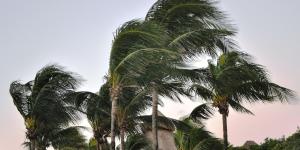
Have you ever been caught outside during a sudden gust that nearly knocked you off your feet? Strong winds are more than just an inconvenience – they can pose a significant threat to both personal safety and property damage. Knowing how to identify strong winds and the associated risks allows you to take...
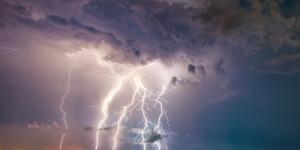
The Earth's atmosphere crackles with unseen energy. Atmospheric electrical phenomena refer to the natural electrical processes that occur within the Earth's atmosphere. This encompasses a wide range of electrical activity, from the dramatic discharges of lightning to the more subtle ongoing processes that...

Have you ever witnessed a vibrant rainbow arch across the sky, or perhaps seen an ethereal halo surrounding the sun? These captivating phenomena are known as photometeors. Photometeors are luminous atmospheric phenomena that arise from the interaction of sunlight or moonlight with atmospheric particles,...

Many of us think of dinosaurs when we think of fossils, these terrifying animals often most capturing the imagination. However, all types of life have been fossilized. These are no less important in terms of the evolutionary development of our planet. Plant fossils are the preserved remains of prehistoric...

Spores are small yet vital reproductive units created by a variety of organisms. Unlike seeds, which contain intricate structures like embryos and food reserves, spores are simpler in composition. Nevertheless, these tiny cells play a crucial role in the survival and spread of their parent organisms. By...

Hygrometers are devices used to measure the relative humidity of air or solid materials. Many of us associate them with monitoring or predicting the weather, but these instruments are used in a variety of applications. Such applications include indoor climate monitoring, agriculture, meteorology and the...

Club mosses, also known as lycopodia, are a fascinating group of ancient vascular plants. They're not true mosses, despite the name, but a separate lineage that dates back hundreds of millions of years. Club mosses are living examples of a very early plant design, thriving on Earth for much longer than flowering...

The endomembranous system is a set of membranes and structures in eukaryotic cells that collaborate in the modification, packaging and transport of lipids and proteins. The smooth endoplasmic reticulum (SER) is a network of tubular and membranous structures which are connected to each other. Their function...

Flowers are the vibrant crowns of the plant kingdom, captivating us with their diverse shapes, sizes, and colors. However, they serve a vital purpose that goes beyond aesthetics: reproduction. These magnificent exhibitions are nature's intricate factories, producing seeds for the following generation....
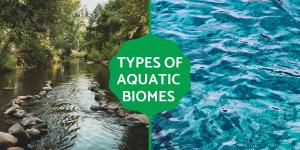
Our planet is a watery world, with aquatic biomes covering a vast majority of its surface. These biomes are classified based on factors like salinity (salt content) and water movement. Understanding aquatic ecosystems isn't just for curious minds. It's crucial for ensuring the health of our planet and...

Tree sap is a substance produced by plants which has different functions for the survival of the plant. Although we often associate it with trees, all vascular plants contain sap in some form. It is vital for the growth and development of a plant, but also for its continued functioning. Sap is composed...

Some parts of a flower are easier to identify than others, with the stalk and petals being two of the most obvious. Although they are related and sound similar, the sepals are less well known than petals, but they are important structures in angiosperm plants. Angiosperms are also known as flowering plants...
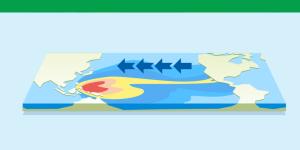
Did you know that a cooler Pacific Ocean can trigger flooding in Southeast Asia and droughts in the American Southwest? This paradoxical scenario is a consequence of La Niña, a climate phenomenon impacting weather patterns around the world. La Niña is one phase of the El Niño-Southern Oscillation (ENSO) cycle,...

Flowers dazzle us with their vibrant colors and sweet scents, but behind this beauty lies a complex reproductive system. At the heart of this system are carpels, the often-overlooked female reproductive organs of flowering plants. These modified leaves play a critical role in ensuring plant survival and...

Cold waves are meteorological phenomena which are characterized by a sudden decrease in temperature that is then extended over a prolonged period of time. Also known as cold snaps or cold spells, there are certain characteristics common to all cold waves, but they can present differently depending on the...

Animals are classified by many different criteria, but the type of food they eat is one of the most significant. Piscivores are animals which feed primarily on fish, deriving their necessary nutrients mainly from this source. While being piscivorous is a commonality in these animals, they are an incredibly...

Trichomes are epidermal appendages in plant organisms. Their function is to protect the plant organism against external factors and to carry out various metabolic processes. The types of trichomes in plants can be classified according to different factors, including the presence of glands, the number...

Like many geographical features, it can be difficult to differentiate between a gulf vs. bay. They are very similar coastal areas, surrounded both by bodies of water and land on either side. There are some notable differences which can lead us to describe one or the other. These differences can be found...

Erosion is the process by which the outermost layer of land is gradually worn away. The land which is worn down is usually in the form of rock or soil. Land erosion is caused by the abrasive action of physical agents which exert force on the geographical material. These agents can be in the form of water,...

Also know as the Peru Current, the Humboldt Current is an oceanic current in the Pacific that extends from Chile to Ecuador, including the Galapagos Islands. Its origin lies in the combined effects of the Earth's rotational movement and the centrifugal force exerted by the oceanic water masses of the equatorial...

Tiny but mighty, tardigrades are microscopic creatures that are virtually indestructible. Also known as water bears, tardigrades can withstand extremes that would kill most other living things. These include boiling temperatures, freezing cold, even the vacuum of space. But what makes these creatures so...

Imagine a cell that possesses the amazing capacity to change into any component of the body, healing injuries and fending off disease. This incredible potential is embodied by stem cells, which act as nature's architects. They can be divided in three main types, and each type serves a different purpose...
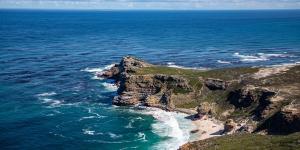
A cape is a geographical feature that is formed by an extension of land that projects into the interior of the ocean. Such capes have served for years as navigation reference points and as strategic points for the placement of lighthouses. Similarly, they are home to a rich biodiversity of plant and...

Thallophytes are a type of plant organism which some may not immediately recognize as plants. Plants are categorized using various criteria, with one important factor being cellular organization. Cell can be arranged in various ways to carry out the basic processes of nutrition, respiration and reproduction....

Modern air travel connects us across continents, facilitating global trade and tourism. However, this convenience comes at an environmental cost. Airplanes are in fact significant contributors to greenhouse gas emissions and a major driver of climate change. So, just how much pollution do airplanes...
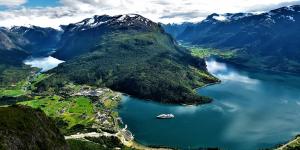
Fjords are responsible for some of the most beautiful and picturesque sights in the world. Found near the sea, they are coastal features which can vary greatly in form and appearance. They always have steep and rocky slopes, geographical features which are related to fjord formation. They are the result...

Although not well known outside of botanists, monoecious plants are very common across the globe. In fact, they are one of the most numerous types of plants in the world. The reason it is little known is because their categorization is due to their reproductive processes. There are various types of reproduction...

While commonly associated with flowing streams and pristine lakes, the majority of readily accessible freshwater (excluding polar ice caps and glaciers) resides underground as groundwater. Half the world's inhabitants rely on groundwater for primary or secondary water, making them a significant contributor...

Pyrophytic plants are those species of plants that resist and resist the effects of fire. While fires can be devastating, they are also an integral part of certain ecosystems. They are important for nutrient cycling, improving biodiversity and other factors. They are also not new and have been occurring since...
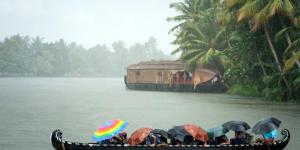
We may have heard of the monsoon season, the time during which wind and heavy rainfall can provide difficulties. For some of us, this means we need to reconsider travel plans. For many communities around the world, it means drastic changes and adaptations to their way of life. Fortunately, it also means...
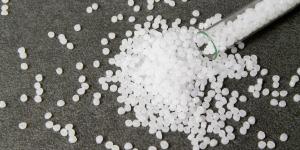
Plastic pellets, also known as nurdles, serve as the raw material for countless plastic products, from bottles and toys to textiles and medical equipment. Their manufacturing and transportation, however, pose a silent threat. Spills, leaks, and improper disposal lead to nurdles infiltrating waterways, coastlines,...
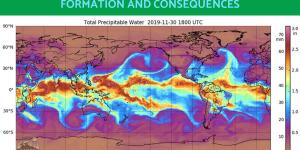
Atmospheric rivers are currents of concentrated water vapor in the Earth's atmosphere. These meteorological phenomena act on the global distribution of humidity and the regulation of our climate. These currents are capable of transporting enormous amounts of moisture over long distances, significantly influencing...

Allelopathy is a complex phenomenon in the natural world where plants release specialized chemicals, known as allelochemicals, that impact the growth, development, and survival of other organisms in their environment. These interactions can be positive, negative, or neutral, influencing various aspects...

We often confuse the terms jungle and forest, but this is because they are closely related. A jungle is a type of dense forest, usually found in tropical or subtropical regions. This is why we often associate jungles with tropical rainforests since they are one of the densest types of jungle forest. A...
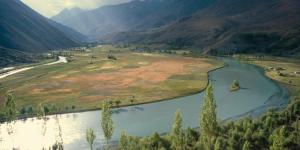
An alluvial plain is a flat landform that is created by the accumulation of sediments. These are sediments carried by river courses, especially common in lower areas where the speed of the current decreases. An alluvial plain may be completely or partially covered by water during periods of flooding. Among...

A polar vortex is a weather phenomenon that is very important in terms of climate regulation in the polar regions of Earth. This phenomenon is characterized by a mass of cold, dense air that circulates in a vortex. This vortex is counterclockwise in the northern hemisphere and clockwise in the southern...
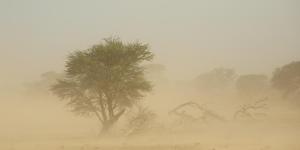
Lithometeors are solid particles suspended in the Earth's atmosphere. These particles, predominantly composed of solids, play a crucial role in shaping various ecological and meteorological processes. From dust to sand and ice crystals, these particles contribute to the dynamic interactions within Earth's...

You may have heard the common idiom or some variation which claims a red sky at night is a sailor's delight, but a red sky at morning is a sailor's warning. This is a piece of conventional wisdom which relates to how the sky can indicate potential weather patterns. Not all conventional wisdom is accurate. Although...

In the realm of fluid dynamics, a thermocline emerges as a distinct layer in a body of water where there is a rapid change in temperature with depth. This invisible boundary acts as a barrier, separating warmer, sunlit waters from the cooler, deeper layers. The presence of a thermocline plays a crucial...

Deep ocean currents are driven by a thermohaline circulation, a phenomenon that regulates the global distribution of heat and nutrients in the world's oceans. This complex system of marine currents arises from variations in water temperature and salinity, factors that affect its density. In the polar regions,...
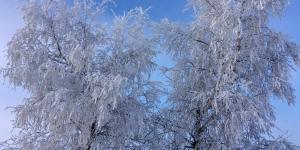
Rime ice is a meteorological phenomenon that is defined as the direct formation of a layer of ice on exposed surfaces such as tree branches, leaves and grass. It occurs due to the freezing of water vapor in the air. This process is influenced by specific atmospheric conditions of humidity and near-freezing...
